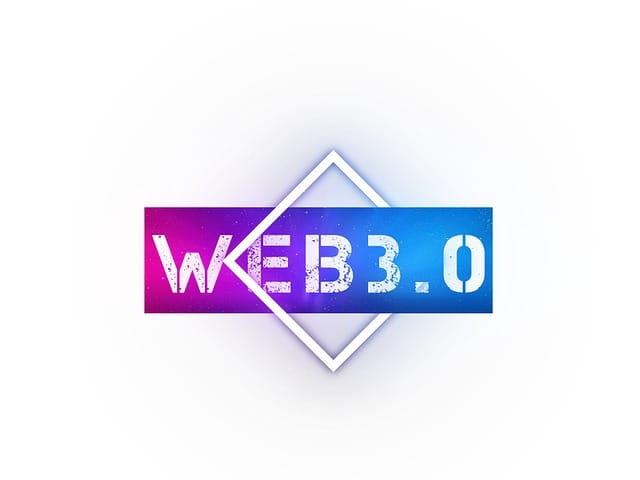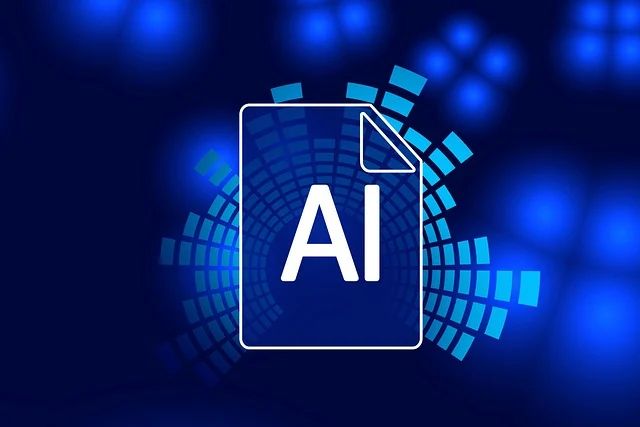In the ever-accelerating race of technological innovation, three megatrends have emerged as frontrunners shaping the narrative of the digital future: Web3, Artificial Intelligence (AI), and the Metaverse. Each offers a fundamentally different vision of how technology will evolve and integrate with our lives. While Web3 champions decentralization and user control, AI accelerates automation and cognition, and the Metaverse proposes a reimagined, immersive digital environment.
As businesses, developers, and investors explore where to place their long-term bets, it becomes imperative to analyze not just the hype but the real, tangible potential behind each technology. The interplay among these technologies also raises a crucial question: Which one is most likely to define the future of the internet and digital experience as we know it?
Understanding the Contenders
Web3: A Decentralized Internet
Web3 marks a philosophical and technical shift from the centralized models of Web2 toward a decentralized, user-empowered internet built on blockchain and distributed ledger technologies. In this model, data, identity, and ownership are no longer managed by tech giants or third parties but are instead governed by cryptographic protocols and decentralized governance. The ethos of Web3 revolves around trustless systems, where intermediaries are removed, and transparency is encoded into the architecture itself.

The real-world implications of Web3 are far-reaching. It enables self-sovereign identities where users control their digital personas and data. In finance, decentralized finance (DeFi) allows peer-to-peer transactions without traditional banks. Creators and artists are now leveraging NFTs to claim royalties and establish digital provenance. While the technology is still maturing, Web3 is steadily laying the foundation for a more equitable and participatory digital ecosystem, though it faces considerable challenges related to scalability, user adoption, and policy uncertainty.
Artificial Intelligence: The Cognitive Revolution
AI has rapidly transitioned from a theoretical concept to a practical engine driving innovation across almost every industry. It is the most mature and commercially successful of the three technologies discussed here. Powered by data and algorithms, AI mimics human intelligence to perform tasks such as learning, reasoning, pattern recognition, and natural language understanding. With models like GPT-4 and beyond, AI is revolutionizing how humans interact with machines and how decisions are made in both micro and macro contexts.

AI’s presence is ubiquitous: it powers the algorithms that recommend your next video or product, manages logistics in global supply chains, detects fraudulent financial transactions in real time, and assists doctors in diagnosing diseases with incredible precision. It is also deeply embedded in the enterprise software ecosystem, driving productivity and innovation at scale. While concerns around bias, data privacy, and ethical governance remain, the momentum behind AI is undeniable, making it one of the most impactful technologies of our era.
The Metaverse: The Immersive Internet
The Metaverse, still in its embryonic stages, offers a compelling vision of how digital experiences can transcend traditional interfaces like screens and keyboards. It aspires to create persistent, shared, and immersive virtual worlds where people can socialize, work, play, and even earn an income through digital economies. Unlike existing social media platforms, the Metaverse promises a spatial, embodied internet where users engage via avatars in real-time environments enhanced by VR, AR, and haptic technologies.

Although much of the current Metaverse experience is rooted in gaming, its long-term potential extends into education, healthcare, real estate, and remote collaboration. Imagine virtual classrooms where students interact with 3D models, or business meetings taking place in hyper-realistic conference rooms. However, significant hurdles remain. User adoption is slow due to high hardware costs and technological limitations. Moreover, many current platforms lack interoperability, leaving users siloed within isolated ecosystems. Still, for those betting on the long game, the Metaverse offers an ambitious reimagining of digital life.
Comparative Analysis
| Feature | Web3 | Artificial Intelligence | Metaverse |
|---|---|---|---|
| Maturity | Emerging | Mature and growing | Early-stage |
| Adoption | Niche communities, growing | Mainstream, cross-industry | Early adopters, gaming-focused |
| Technical Infrastructure | Blockchain, smart contracts | Neural networks, data ecosystems | VR/AR hardware, 3D engines |
| Use Cases | Finance, identity, content | Automation, healthcare, analytics | Gaming, remote work, social spaces |
| Investment Potential | High risk, high reward | Steady, scalable | Volatile, speculative |
| Challenges | Scalability, UX, regulation | Bias, data ethics, regulation | Hardware access, user retention |
This table underscores that each technology is at a different maturity stage and serves distinct yet sometimes overlapping purposes. AI leads in terms of immediate applicability and commercial value, while Web3 and the Metaverse represent more speculative but potentially revolutionary changes.
Synergies and Intersections
The real technological frontier lies not in these technologies competing but in their convergence. AI, Web3, and the Metaverse are not mutually exclusive—in fact, their combined integration may catalyze the most significant transformation of the digital era. For example, AI can power intelligent, adaptive avatars and NPCs in the Metaverse, making experiences more personalized and dynamic. Web3 can underpin the economic infrastructure of these worlds by ensuring decentralized ownership of assets and digital identities.
Similarly, AI models can be trained on decentralized datasets sourced from Web3 platforms, creating ethical and permissioned AI training environments. The decentralized nature of Web3 could also help address AI’s data centralization problem, while AI itself can improve blockchain operations through smart contract auditing, fraud detection, and predictive analytics. As these technologies mature, cross-pollination will become not just advantageous but essential for unlocking their full potential.
The Case for Each Technology
Why Bet on Web3?
Web3 is as much a cultural movement as a technological one. It responds to long-standing criticisms of surveillance capitalism, data monopolies, and centralized control. By putting power back into users’ hands, it promotes digital freedom and economic equity. The ecosystem is vibrant, driven by developers committed to open-source ideals and innovation in identity, finance, governance, and content creation. Despite ongoing debates about feasibility and regulation, Web3 continues to attract visionary talent and significant venture capital.
Pros:
- Promotes decentralization, transparency, and trust
- Enables peer-to-peer transactions and new monetization models
- Highly aligned with next-gen user values (privacy, autonomy)
Cons:
- Infrastructure is still underdeveloped
- Complex user onboarding and steep learning curve
- Legal and regulatory frameworks are still evolving
Why Bet on AI?
AI stands at the intersection of science and utility. It is no longer confined to research labs—it is actively shaping how businesses operate and how consumers live. From chatbots to autonomous vehicles, AI is producing tangible economic and social value. Its capacity to scale, adapt, and self-improve makes it a cornerstone of technological progress. It is especially attractive to enterprises due to its capacity to reduce costs, uncover insights, and enhance customer experiences.
Pros:
- Wide-ranging applications and proven scalability
- Drives innovation and productivity across sectors
- Backed by robust funding and regulatory support in many regions
Cons:
- Risk of bias and ethical misuse
- High computational and energy demands
- Centralized power dynamics in model ownership
Why Bet on the Metaverse?
The Metaverse may be the boldest vision of all—one that redefines not just how we use technology but how we inhabit it. As 5G, edge computing, and wearable tech evolve, immersive digital environments will become more viable and accessible. For brands, the Metaverse offers new dimensions of customer engagement; for users, it provides immersive learning, social, and working environments that transcend physical boundaries. While it is the most speculative of the three, it also holds the greatest potential for redefining human interaction.
Pros:
- Redefines user experience in digital space
- Unlocks new markets in digital real estate, education, and commerce
- Natural interface for AI and Web3 integration
Cons:
- Heavily reliant on hardware adoption
- Fragmented ecosystems with limited interoperability
- Lacks a clear regulatory or ethical framework
Investor and Developer Outlook
The investor landscape provides an insightful snapshot of perceived potential. AI continues to draw the lion’s share of funding, particularly in enterprise and SaaS applications. Web3, while experiencing a slowdown due to macroeconomic factors and regulatory scrutiny, remains robust in infrastructure and middleware development. The Metaverse, although experiencing a cooling of speculative investment, is gaining traction in industrial applications such as virtual training, simulations, and digital twins.
Developers, meanwhile, are increasingly cross-disciplinary. Many Web3 developers are learning AI to embed intelligence into decentralized apps, and game developers are exploring both blockchain and AI to power next-generation Metaverse platforms. This trend toward technological convergence reflects an emerging reality: those who understand the interplay of these technologies will shape the next digital paradigm.
Conclusion: Betting on the Future
So, what’s the best bet for the future of tech? The answer isn’t straightforward—and perhaps that’s the point. Artificial Intelligence is clearly the most immediate and investable technology, delivering measurable returns across industries and reshaping global workflows. It’s not just a future trend—it’s the present. For those seeking reliable growth and near-term innovation, AI is a pragmatic and proven choice.
Web3, on the other hand, is a long-term ideological and technical bet on how the internet should function. Its decentralized nature addresses deep systemic issues within today’s digital economy. Though it faces challenges, the fundamental shift it proposes—returning control to users—may be one of the most powerful transformations of the next decade, particularly as digital rights and privacy become global priorities.
Finally, the Metaverse, while the most nascent, represents a generational leap in how humans may one day inhabit digital space. If successful, it could change how we perceive presence, identity, and community in the digital realm. While the timelines for mass adoption remain uncertain, its influence will grow as immersive technologies evolve.
In truth, the most resilient strategy may not lie in choosing a single winner but in understanding their convergence. The future likely belongs to a tech stack where AI delivers intelligence, Web3 ensures transparency and ownership, and the Metaverse provides a rich, interactive layer of experience. The synergy among these three will not only redefine industries—but may redefine humanity’s relationship with technology itself.



